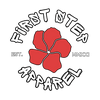Nutrition labels are probably the best roadmaps if you are looking to make informed choices about what you are putting into your body. After stumbling our way through losing 100lbs, we eventually learned how to read nutrition labels and we want to make sure YOU don't have to go through the same issue.
So, how do you read a nutrition label? Here's the basics: start at the top with serving size and checking calories, review macro and mircro nutrients on the label body to understand the percent daily value and read through the ingredients. It's really that easy to read a nutrition label
But this doesn't mean you'll can get the best information at a glance. Follow along with us so you can ensure that what you are putting into your body is ACTUALLY healthy for you.
Key Take Aways
-
Unlock the Secrets of Nutrition Labels: Discover how to navigate nutrition labels top to bottom, empowering yourself to make informed and healthier food choices.
-
Master the Basics and Beyond: Learn step-by-step techniques for deciphering serving sizes, calories, nutrients, and ingredients, and gain insights into comparing products for better dietary decisions.
-
Tailor Your Diet to Your Preferences: Explore tips for aligning nutrition label reading with dietary preferences such as vegetarian, vegan, gluten-free, low-carb, and low-sugar lifestyles, ensuring that your food choices support your health goals.
Table of Contents
-
Introduction
-
Understanding Food Labels: A Step-by-Step Guide
- Serving Size
- Calories
- Nutrients to Limit
- Essential Nutrients
- Percent Daily Value (%DV)
-
Deciphering Nutrition Labels for Healthy Eating
- Serving Size Illustrated
- Calorie Breakdown
- Making Smart Nutrient Choices
-
Interpreting Nutrition Facts: Tips for Label Reading
- Ingredients List
- Unmasking Added Sugars
- Comparing Products
-
Making Sense of Food Packaging: Nutrition Label Breakdown
- Dietary Preferences Guide
- Vegetarian and Vegan Options
- Gluten-Free Selections
- Low-Carb and Low-Sugar Strategies
-
Conclusion

Understanding Food Labels: A Step-by-Step Guide
For those of you looking to step up your healthy living game, knowing how to read food labels is CRUCIAL when it comes to you making healthier choices.
Here is our beginner breakdown on how you can go about succeeding:
Deciphering Nutrition Labels for Healthy Eating
Serving Size:
Begin by checking the serving size. All information on the label, including calories and nutrients, is based on this portion.
Calories:
Next, note the calories per serving. This helps you gauge the energy content of the food.
Nutrients to Limit:
Look for nutrients like saturated fat, trans fat, cholesterol, and sodium. These should be consumed in moderation.
Essential Nutrients:
Identify nutrients like dietary fiber, vitamins, and minerals. Ensure you're getting enough of these for a balanced diet.
Percent Daily Value (%DV):
The %DV indicates how much a nutrient in a serving of food contributes to a daily diet. Aim for foods with lower %DV for saturated fat, sodium, and added sugars.
Interpreting Nutrition Facts: Tips for Label Reading
Now that you understand the basics, here are some tips for effective label reading:
Ingredients List
Check the ingredients list for hidden additives, preservatives, and allergens. Ingredients are listed in descending order of quantity.
Added Sugars
Be wary of added sugars with various names like sucrose, fructose, and corn syrup. Limiting added sugars supports healthier eating.
Comparing Products
When shopping, compare nutrition labels between similar products to make the healthiest choice.
Making Sense of Food Packaging: Nutrition Label Breakdown
Analyzing Food Labels for Dietary Preferences
Finally, let's explore how to use nutrition labels to align with your dietary preferences:
Vegetarian and Vegan Diets:
Check for animal-derived ingredients and focus on plant-based nutrients.
Gluten-Free:
Identify gluten-containing grains like wheat, barley, and rye in the ingredients list if you have gluten sensitivities.
Low-Carb or Low-Sugar:
Pay attention to total carbohydrates and sugars per serving.
Conclusion
Congratulations! After completely reading this article you have now unlocked the ability to properly read nutrition labels. While you are just a novice in reading these, it is an ability that gets better the more you use it, so dive deep and read those labels like it's a book.
Now that you have this knowledge in your tool box, it will be easier for you to make healthier choices about your diet, support your lifestyle choices and maintain a clear, balanced diet.
What biggest item did you learn about when it comes to nutrition labels?





Leave a comment